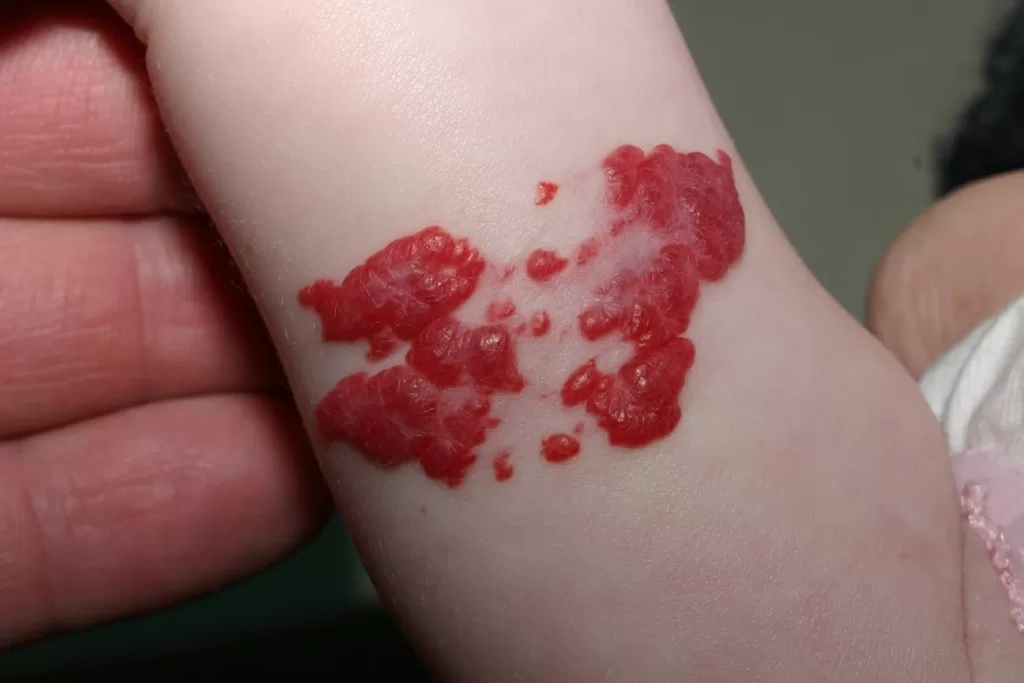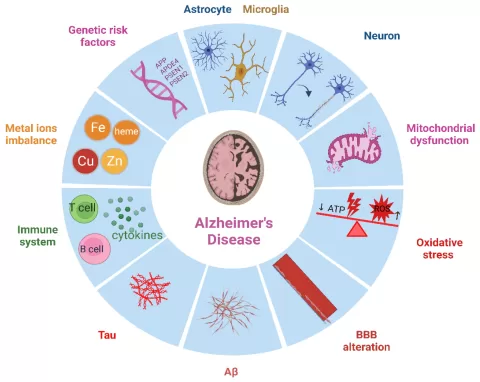Birthmarks are unique skin features that many individuals are born with or develop shortly thereafter, sparking curiosity and sometimes concern. These intriguing anomalies can be classified into various types, each with its own characteristics and implications, ranging from vascular birthmarks like hemangiomas to pigmented ones such as moles. Understanding the genetic factors of birthmarks can shed light on their hereditary nature, while knowledge of birthmark treatment options, including advanced techniques like pulsed dye laser therapy, has evolved considerably over the years. Moreover, the cultural significance of birthmarks varies widely, with some societies viewing them as symbols of identity or spiritual markers. This guide delves into the fascinating world of birthmarks, exploring their meanings, treatments, and the stories they tell across different cultures.
Skin markings that appear at birth or soon after are commonly referred to as birthmarks, but they can also be described using terms such as skin anomalies or pigmentation abnormalities. These marks can evoke a range of feelings, from admiration to concern, depending on their appearance and the personal beliefs tied to them. In addition to being visually distinctive, these skin features highlight crucial genetic connections and can provide insights into an individual’s overall health. The treatment landscape for these markings has significantly evolved, particularly with the introduction of innovative therapies like lasers that target specific types of birthmarks. Understanding the broader implications of these skin features can enhance our appreciation for their role in human diversity.
Understanding the Various Types of Birthmarks
Birthmarks can be categorized into two primary types: vascular and pigmented. Vascular birthmarks arise from irregularities in blood vessels, leading to conditions such as hemangiomas and port-wine stains. Hemangiomas, for example, appear as raised red lesions that typically develop during an infant’s first year of life and may shrink over time. On the other hand, port-wine stains are flat, dark red or purple marks that do not fade, often requiring medical intervention for cosmetic reasons as the individual ages.
Pigmented birthmarks, conversely, are characterized by an excess of melanin, which gives the skin a darker appearance. Common examples include moles and café-au-lait spots. Moles can occur anywhere on the body and may change over a person’s life, while café-au-lait spots, which appear as light brown patches, could indicate a genetic condition if present in large numbers. Understanding these types of birthmarks is crucial for monitoring their development and determining if treatment is necessary.
The Role of Genetics in Birthmark Formation
Research into the genetic factors of birthmarks has revealed that while many are sporadic, some individuals may inherit a predisposition to develop certain types. Studies suggest that genetic variations can influence the likelihood of vascular birthmarks, such as hemangiomas, appearing in families. For instance, if a parent has a noticeable birthmark, their child may have a higher chance of having a similar marking or another type of birthmark due to shared genetic traits.
Moreover, ongoing research is delving into the specific genes that might be linked to various birthmark conditions. Geneticists are exploring how environmental factors interact with these inherited traits, providing a more comprehensive understanding of how and why birthmarks develop. Such insights are invaluable for dermatologists and families alike, assisting in better monitoring and potential treatments.
Exploring Treatment Options for Birthmarks
As our understanding of dermatological health has advanced, so too have the treatment options available for individuals with birthmarks. One of the most effective modern treatments is the use of pulsed dye laser therapy, particularly beneficial for vascular birthmarks like port-wine stains. This technique employs a focused beam of light that targets the blood vessels within the birthmark, effectively reducing its appearance without damaging surrounding skin.
In addition to laser treatments, there are options for surgical intervention, especially for larger or more problematic birthmarks that may interfere with normal bodily functions or aesthetics. It’s essential for individuals considering treatment to consult with a dermatologist who specializes in birthmark management to discuss the best approach tailored to their specific condition.
Cultural Significance of Birthmarks Across Societies
Birthmarks hold various cultural significances across different societies, often viewed through the lens of tradition and belief. In some cultures, a birthmark may be regarded as a sign of good luck or a marker of a person’s destiny. For example, in certain African communities, specific types of birthmarks are believed to indicate that the individual has a special connection to the spiritual world or may possess unique talents.
Conversely, in some cultures, birthmarks can be stigmatized, viewed as imperfections or omens. This cultural perception can impact individuals’ self-esteem and social interactions. Understanding these cultural narratives surrounding birthmarks can aid in fostering a more inclusive environment, where individuals are not judged by their appearance but appreciated for their unique stories.
Monitoring Birthmarks: When to Seek Professional Advice
Monitoring birthmarks is crucial for ensuring skin health, particularly since changes in size, shape, or color can indicate potential health risks. Dermatologists often recommend regular check-ups, especially for pigmented birthmarks like moles, which can develop into more serious conditions such as melanoma if not monitored closely. It is advisable for individuals to perform self-examinations and consult with a healthcare professional if they notice any significant changes.
Awareness of the characteristics of different birthmarks can empower individuals to seek appropriate care. For instance, vascular birthmarks that bleed or become symptomatic warrant immediate medical attention. By educating themselves on the signs to watch for, individuals can take proactive steps in maintaining their skin health and addressing any concerns with a dermatologist.
Frequently Asked Questions
What are the different types of birthmarks and how can they be identified?
Birthmarks are classified into two main types: vascular birthmarks and pigmented birthmarks. Vascular birthmarks include stork bites, hemangiomas, and port-wine stains, which are characterized by abnormal blood vessel growth. Pigmented birthmarks, such as moles and café-au-lait spots, involve excess pigment in the skin. Identifying these birthmarks can help in understanding their potential significance and monitoring any changes.
What are the latest birthmark treatment options available?
Recent advancements in birthmark treatment include the use of Pulsed Dye Laser therapy, particularly effective for vascular birthmarks like port-wine stains and hemangiomas. This treatment is known for its safety and efficiency, especially in pediatric patients. It’s essential to consult with a dermatologist to determine the best treatment approach based on the type and severity of the birthmark.
Can birthmarks be inherited, and what are the genetic factors involved?
Yes, there are genetic factors that may influence the occurrence of birthmarks. While not all birthmarks are hereditary, individuals with a family history of birthmarks may have a higher likelihood of developing similar skin markings. Ongoing research is examining inheritance patterns and how genetics interact with environmental factors in the development of birthmarks.
What cultural significance do birthmarks hold in various societies?
Birthmarks often carry unique cultural meanings across different societies. Some cultures view certain birthmarks as symbols of the soul or signs of past lives. These beliefs can add a layer of personal identity and cultural narrative, influencing how individuals perceive and relate to their birthmarks.
How should individuals monitor their birthmarks for changes?
Monitoring birthmarks involves regularly checking for changes in size, color, or texture. This is particularly important for pigmented birthmarks like moles, as variations can indicate potential health risks. Consulting with a dermatologist for routine skin checks can help ensure any concerning changes are evaluated and addressed promptly.
| Category | Examples | Description |
|---|---|---|
| Vascular Birthmarks | Stork bites (angel’s kiss) | Flat, pink marks on the back of the neck and eyelids that fade over time. |
| Hemangiomas | Raised, red marks that grow during the first year then shrink without treatment. | |
| Port-wine stains | Flat, dark red or purple marks caused by dilated blood vessels that do not fade. | |
| Pigmented Birthmarks | Moles (nevi) | Small, dark brown spots found anywhere on the body. |
| Café-au-lait spots | Light brown patches; more than two may indicate a genetic condition. | |
| Mongolian spots | Blue-gray marks on the lower back or buttocks of darker-skinned infants that fade with age. |
Summary
Birthmarks are fascinating skin anomalies that can provide insight into genetics, health, and cultural beliefs. Understanding birthmarks involves recognizing their various types, including vascular and pigmented birthmarks, each with unique characteristics and implications. From the traditional monitoring of their changes to modern treatment options like laser therapy, the approach to managing birthmarks has evolved significantly. Furthermore, the cultural significance and potential genetic inheritance of birthmarks highlight their complexity in human identity and health. Ongoing research continues to enhance our understanding of birthmarks, paving the way for improved care and treatment tailored to individual needs.
The content provided on this blog (e.g., symptom descriptions, health tips, or general advice) is for informational purposes only and is not a substitute for professional medical advice, diagnosis, or treatment. Always seek the guidance of your physician or other qualified healthcare provider with any questions you may have regarding a medical condition. Never disregard professional medical advice or delay seeking it because of something you have read on this website. If you believe you may have a medical emergency, call your doctor or emergency services immediately. Reliance on any information provided by this blog is solely at your own risk.







